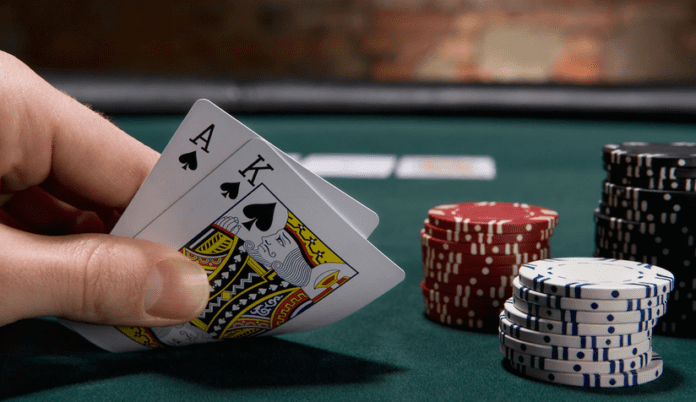Poker is a game of incomplete information, meaning players must use their knowledge and experience to make informed decisions. Therefore, one of the most important poker skills is the ability to evaluate ranges and balance one’s range.
Evaluating ranges involves understanding how different hands interact with each other in various scenarios, while balancing one’s range requires balancing aggressive and passive plays depending on the situation.
By effectively evaluating poker ranges and balancing their play accordingly, players can become more successful at making profitable decisions during gameplay.
Evaluating Poker Ranges
Players should look at their opponent’s possible hands and the board texture when evaluating poker ranges. For example, if you play online poker in a no-limit hold ’em game, the player should consider all of their opponent’s possible holdings, from pocket pairs to suited connectors. The player must also consider how these different hands interact with each other based on the current board texture.
For example, if a player holds AK and the flop comes Ace-King-Queen, they should consider their opponent’s possible range of hands. While pocket pairs are less likely in this scenario, suited connectors may still be in play. The player must also consider how these different hands interact with each other depending on the turn and river cards.
Balancing Your Ranges
Once a player has evaluated their opponent’s range, they must focus on balancing it. This involves playing aggressively or passively, depending on the situation. For example, if a player holds pocket Aces pre-flop and the board is dry (i.e., there are no potential straight or flush draws), it may be profitable to raise and take advantage of position.
On the other hand, if the flop comes Ace-King-Queen and the player holds the middle pair, it may be more beneficial to check and call as opposed to raising to keep their opponents in the pot for additional value.
By learning how to evaluate poker ranges and balance one’s range accordingly, players can become more successful in making profitable decisions during gameplay. This will ultimately lead to more positive results in the long run.
Practice and experience are key when learning to evaluate ranges and balance one’s play, so players should study both concepts and hone their skills.
Understanding How Different Hands Interact with Each Other in Various Scenarios
When evaluating range, players should consider how different hands interact with each other in various scenarios. For instance, if a player holds AK pre-flop and the flop comes Ace-King-Queen, they need to consider their opponent’s possible holding from pocket pairs to suited connectors. In addition to this, they must also understand how these different hands work together based on the current board texture.
It is often wise for players to factor in their cards when analyzing the situation. After all, one of the most important things in poker is understanding how your hand interacts with other holdings. Doing so can help players make more informed decisions about what their opponents may be holding and which moves would be most profitable.
Balancing Your Range
Once players have evaluated their opponent’s range, they must focus on balancing their range. This involves playing both aggressively and passively, depending on the situation. For instance, if a player holds pocket Aces pre-flop and the board is dry (i.e., there are no potential straight or flush draws), it may be profitable to raise and take advantage of position. On the other hand, if the flop comes Ace-King-Queen and the player holds the middle pair, it may be more beneficial to check and call as opposed to raising to keep their opponents in the pot for additional value.
Balancing Aggressive and Passive Plays Depending on the Situation
Ultimately, players must learn how to balance aggressive and passive plays, depending on the situation. This will require knowledge of both range evaluation and understanding how different hands work together based on the board texture. With enough practice and experience, players can evaluate ranges and balance their own play for maximum profitability.
In conclusion, learning to evaluate poker ranges and balance one’s range accordingly is essential to make profitable gameplay decisions. Factors such as position, board texture, and one’s ings play an important role in this process. With enough practice and study, players can become proficient in these skills and maximize their profits in any given scenario.
Becoming More Successful at Making Profitable Decisions During Gameplay
By learning how to evaluate poker ranges and balance one’s range accordingly, players can become more successful in making profitable decisions during gameplay. This will ultimately lead to more positive results in the long run. Practice and experience are key when learning to evaluate ranges and balance one’s play, so players should study both concepts and hone their skills. With enough practice, players can evaluate poker ranges and balance their play for maximum profitability.
Takeaway
Players need to understand range evaluation and how different hands interact with each other based on the board texture to maximize profitability from any given hand in a poker game. It is also important for players to balance their range to make more informed decisions about what their opponents may be holding and which moves will yield the highest return. With enough practice and experience, players can become proficient in these skills and maximize their profits during gameplay.
Do Not Open is already out, will you be able to get out of it?














